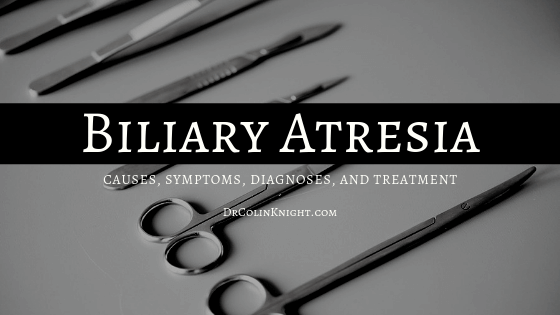When my younger son was born, he was jaundiced. Jaundice is “a medical condition with yellowing of the skin or whites of the eyes, arising from excess of the pigment bilirubin and typically caused by obstruction of the bile duct, by liver disease, or by excessive breakdown of red blood cells.” The list of things that cause jaundice in newborns is long, but the rare condition that causes jaundice that is of interest to pediatric surgeons is biliary atresia.
What is Biliary Atresia?
Biliary atresia is a rare disease that strikes the liver and bile ducts of infants, typically diagnosed between two to eight weeks old. In biliary atresia, the bile ducts are absent (that’s what atresia means) so there is no way for the bile produced in the liver to reach the intestines.
What Causes Biliary Atresia?
There is no clear cause of biliary atresia. Theories include children developing it as a result of bile duct deformation within the womb, while others may develop it from a viral infection after leaving the womb. The disease seems to favor girls over boys and Asian and African children over Caucasian ones.
What Are the Symptoms?
As previously mentioned, this disease usually does not affect children until two weeks to two months of age. When it does happen, the following list of symptoms should be consulted.
- Jaundice. This is when the skin and eyes become yellowed due to a pronounced amount of bilirubin within the bloodstream; bilirubin is the substance that gives bile its signature color. While jaundice is common in newborns as a result of an immature liver, normal jaundice fades within seven to 10 days of life. Jaundice resulting from biliary atresia tends to occur two to three weeks being born.
- Dark urine. This is also due to excess bilirubin within the bloodstream.
- Acholic stool. Because no bile leaves the intestine, stool appears clay-like in color.
- Swollen abdomen.
- Weight loss and irritability. Both of these develop as jaundice worsens.
How is It Diagnosed?
Blood tests must be done to gauge liver functionality and possibly determine how any jaundice developed. An ultrasound of the liver and gallbladder is essential. The “gold-standard” test is an operative cholangiogram. The surgeon would inject dye into the gallbladder and use an x-ray to see if it passes into the intestines or not. If not, the baby needs surgical treatment.
How is It Treated?
The Kasai procedure, technically known as “hepatoportoenterostomy,” is performed, reconnecting liver-intestine bile flow by excising damaged ducts and connecting the liver directly to the intestine. The child then heals for seven to ten days, followed by antibiotic therapy and possibly medication to encourage bile flow. While the Kasai procedure does not cure biliary atresia, it allows the child to develop healthily. Should the procedure fail, a liver transplant is called for. The younger the baby is when having the operation, the better the outcome.
